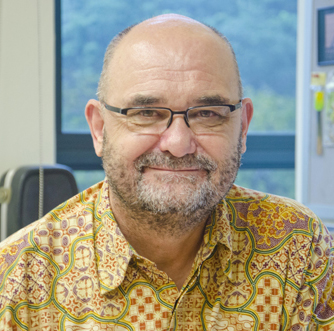Why Singapore’s English Teachers Should Embrace Singlish, Not Fight It
Is it time for Singaporean educators to embrace Singlish as a legitimate learning tool? What the Research […]
Read More
When it comes to new and social media in education, the big idea is really about how they shape and change our literacy practices. An NIE Research Scientist explains why.
What was life like before the Internet? During those days, anyone who could read and write would be considered literate.
“Now, it’s the screen that has central importance,” says Dr Phillip Towndrow, a Senior Research Scientist from NIE. “The ‘reading’ of images and other graphics require new skills that take us beyond what we used to know as literacy.”
“Literacy is now measured, in part, by how easily we can find the things we want on the Internet,” he continues. “But some people tend to get lost in navigating websites immediately!”
This calls for a different way of getting things done. “Not only do students need to learn how to read and write on the printed page, they also need to be able to read and create graphical representations of knowledge.”

“The fact of the matter is that the outside world has changed so much, and the inside world of the classroom has to reflect that reality,” says Phil.
Children and today’s youth are exposed to different media. Most of the time, they are not only consumers, but also producers of content, especially on social media. They are now “prosumers” who can publish content to the masses by just hitting the “Enter” button.
“Their literacy experiences outside of school may not always match what they learn in school,” notes Phil.
To prepare students for life after graduation, schools will have to work on helping them learn how to communicate effectively across a range of different media, and not just with pen and paper.
Because of this belief, Phil thinks that in using new and social media for educational purposes, the big – and ultimate – idea is literacy for communication that is fundamentally multimodal.
Communication now consists of different modes, such as written texts, images, movies and animations, and students need to start thinking like designers or architects to effectively achieve their desired purposes.
“As a multimodal author, I have to bear many things in mind. It’s not just a question of having texts and graphics together like that,” says Phil. “It’s that when we pull these elements together, we have to do so very purposefully and with specific meanings in mind.”
For example, a teacher may instruct a class to create a website with intuitive navigations. Or students may be tasked to think about how they can give directions via social media to a friend who needs to get to a particular restaurant. Would they point their friend to an online map, or type out step-by-step instructions on how to get there?
“Students need to learn how to put texts and images and other representations together in a certain way. It’s certainly not a random process,” explains Phil. “Design underpins what we see and how we experience or understand the intended ‘message’.”
Students need to learn how to put texts and images and other representations together in a certain way. It’s certainly not a random process.
– Phillip Towndrow on multimodal literacy
When students create content using new media, it is common for teachers to use certain rubrics to assess them in media production from a technical point of view, such as their animation skills or their use of music and sound.
Seen in the light of multimodal communication, the students’ intentions as producers and the effects of their messages matter too. These aspects are “intangible, shapeless, personal and highly subjective,” says Phil.
Teachers can find out more by probing students with questions such as: “What would you like your listeners to feel after hearing your story?” or “How do you feel after writing this blog entry?”
“I think it’s important for learners to describe, explain and justify their work from a designer–author’s perspective when they are producing content for others,” Phil notes.
Students often welcome the opportunity to use new or social media to create content for their peers. Perhaps they see such use of their literacy skills as being closer to what they enjoy doing in their daily lives.
“In my own research on the use of laptop computers in English Language learning, when I ask students what their intention was and what story they were trying to tell, they’ll say, ‘I’ve a real opportunity to express myself and how I feel about something. This is the real me. This is my world and I can express it in ways that are really personal to me.’”
This process of creation is not a one-way traffic, says Phil. “Using all these mediating technologies and media changes who you are and the way you think. That’s what I’m interested in, that is, how the use of such technology changes who we are as people and our literacy practices.”
There are many other questions that both educators and researchers are asking about the use of new and social media in the classroom.
Would students benefit from learning with such media? How? What can we do with new and social media that we cannot do with other forms of communication? How do we encourage the participatory spirit of such media and reconcile it with the established classroom culture at the same time?
Researchers like Phil who are searching for these answers have a busy time ahead of them. And as he says, “Stay tuned!”